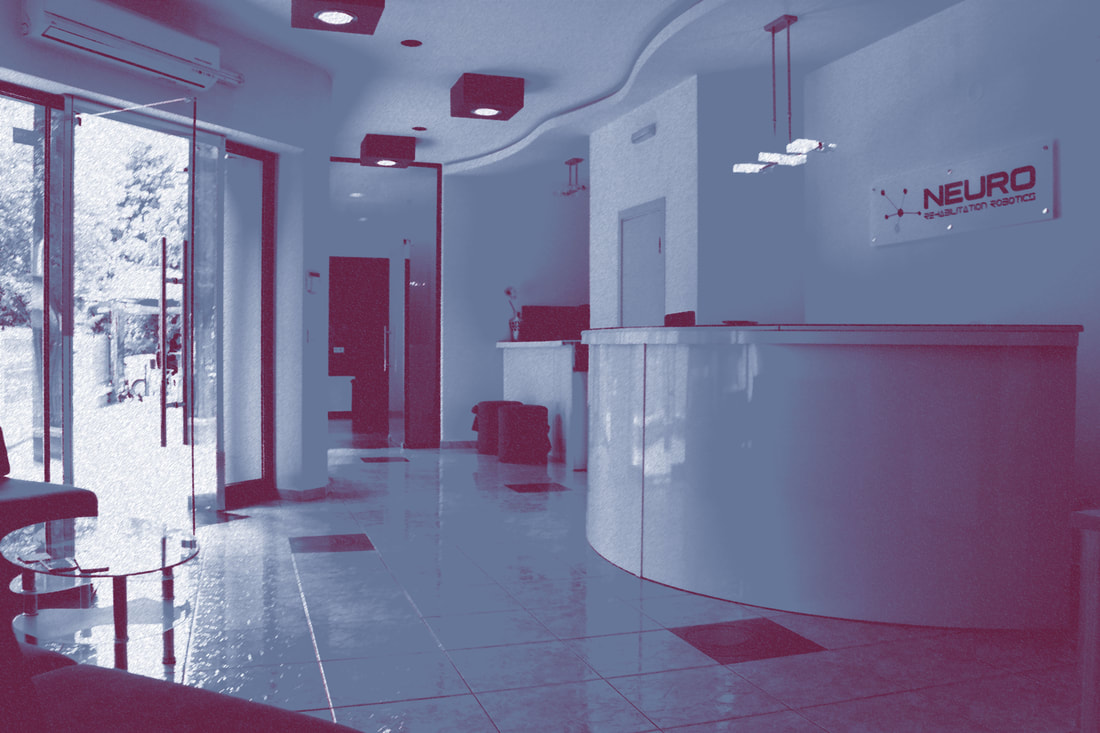|
Robot-assisted therapy is a promising innovative rehabilitation technology for patients with motor disorders. As with any other therapy, motivation is key. To be successful, a therapy regimen needs an active contribution, earnest effort and steadfast commitment by the patient. Creating a supporting environment for the patient to produce the right kind of movement goes hand in hand with any rehabilitation practice. Advancements in technology have ushered a new era adding virtual reality, augmented reality and customizable games to rehabilitation therapy. VR, AR and custom-created games can be used separately or combined to help maintain the interest of the patient and provide critical motivation to perform motion exercises.
The benefits of integrating games, VR/ AR and other breakthrough technologies Traditional rehabilitation therapy is physically and emotionally draining. If patients are exhausted and fail to be stimulated by the therapy their motivation will decrease, leading to a less than optimal result. Trials suggest that robot-assisted therapies have been more successful in retaining patients’ interest and motivation.[1] They are especially effective when combined with VR, AR and customized games. Integrating these technologies into robot-assisted rehabilitation increases engagement and motivation while immersing the patient into rhythmic task-oriented exercises. This ‘gamification’ of the rehabilitation experience can deliver intensive, repetitive movements while sustaining the patients’ interest and lessening the burden on the therapist. Robot-aided therapy also uses wearable devices (from wrist monitors and electrodes to exoskeletons) that can relay real-time feedback. This feedback can be used to refine the therapy while tracking patient’s progress. Rehabilitation robots are ‘smart’ devices built to encourage interaction. They use sensor-based systems to assess movement and positioning, and are able to detect any change in force and motion, no matter how small. Active-assistive robotic technologies are great for storing data, measuring any number of parameters, which is critical for treatment planning and evaluation. Breakthrough technologies are emerging globally, and rehabilitation therapists and clinical researchers are eager to integrate them in their practices. Electromyographic biofeedback (EMG-BFB) uses electrodes that are placed on the patient's muscles and these electrodes respond to any muscle activation by generating a feedback signal. Functional electrical stimulation (FES) uses low-energy electrical pulses that artificially produce body movements in individuals affected by paralysis caused by an injury to the central nervous system. Major advancements in VR technology, notably the arrival of the 6th and 7th generation gaming systems (including the Nintendo Wii and the Xbox 360 Kinect) allowed for more realism to be added to VR. While VR provides a complete immersion experience shutting out the physical world, AR simulation therapies include real world physical objects in the virtual world adding digital elements to a live view and typically allowing for more control in a patient’s interaction with the virtual objects (through the interaction with the real world physical objects). Combined with robotic devices, these new technologies will enhance the rehabilitation treatment’s effectiveness while producing massive amounts of data for clinical evaluations that will pave the way for future improvements. Harnessing VR technology Studies[2] have shown that the vast majority of patients prefer games-assisted therapies since they find them more engrossing and easier to follow. Making the treatment more game-like turns an intensely repetitive task into an engaging challenge, inspiring patients to participate in therapeutic exercises. VR has produced immense benefits, particularly in poststroke rehabilitation.[3] VR allows therapists to create tailor-made training programs that correspond to the patient’s interests. By offering the right incentives retention is increased and the patient is more dedicated to the rehabilitation process. The patients are encouraged to actively interact with the hardware and simulation software, in some cases virtual rehabilitation may even take place in a patient’s home. Telerehabilitation is another interesting new technology offering real-time rehabilitation services over the internet. Patients can have access to professional medical advice from their homes using a VR device. Coupling the gaming elements with robotic devices will enhance rehabilitation treatments and occupational therapy in two important ways:
If you wish to read more, here are some fascinating articles that can be accessed online:
Footnotes:
|
|
|
Hours: Monday - Friday: 8am to 6pm Saturday - 8am to 2pm |
About us:Neurorehabilitation Robotics Ltd. is a private company focused on delivering effective and measurable primary care to patients suffering from different forms of neural damage by supplementing traditional therapy with robotics-assisted protocols.
|
|
Neurorehabilitation Robotics Ltd
|


 RSS Feed
RSS Feed
